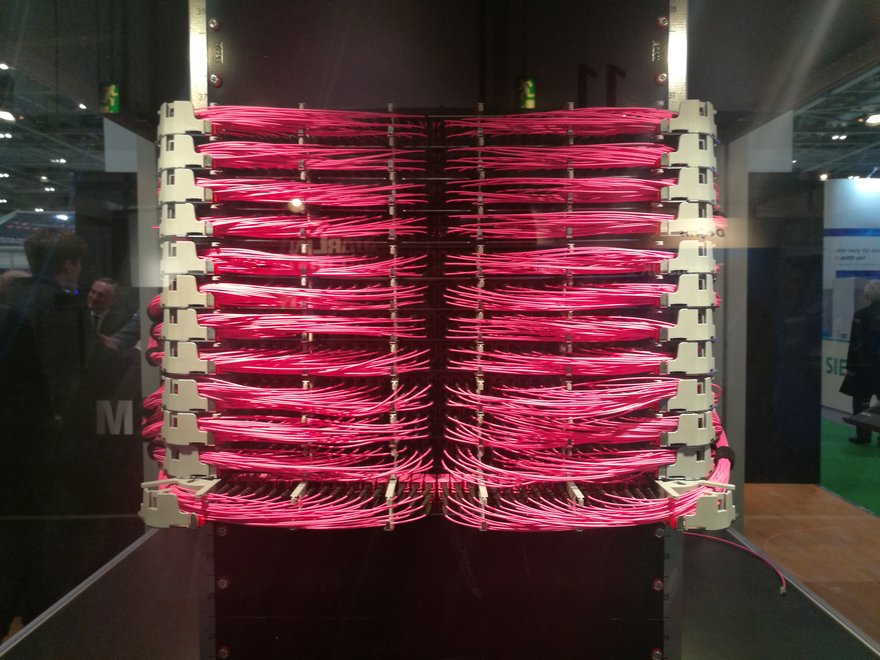Swiss cabling specialist Reichle & De-Massari has launched the highest density fiber optic cable management solution ever created.
The Netscale platform supports up to 120 ports per one rack unit (1U), helping save valuable cabinet space, making cabling more manageable and enabling quicker repairs.
The announcement was made at the Data Center World exhibition in London, where R&M demonstrated a 9U tower with 1,080 patch cords neatly tucked away.
Losing cable weight
R&M is a family-owned business based in the town of Wetzikon, near Zurich, that has been making cables for the telecommunications industry for the past 50 years.
Its latest product, Netscale, was developed for maximum density and can support up to 120 standard LC duplex or MTP ports per rack unit, as opposed to 72 ports typically available from other vendors.
The system utilizes R&M’s new LC quick release connectors and the smallest diameter uniboot patch cords for minimal cabling bulk. It also features cable trays at the rear of the cabinet that enable slack management and prevent additional stress on cables during maintenance.
Thomas Wellinger, market manager for data center segment at R&M, told DatacenterDynamics that it took six diferent prototypes to arrive at the final design.
“Netscale has arisen from the close analysis of customer pain points, years of committed R&D, and adherence to the highest quality standards through the production process. It sets the bar for the industry and finally promises IT managers relief from the data center cabling challenges they have faced for years,” said Wellinger.
Netscale also supports optional features like ‘inteliPhy’ automated connectivity tracking, where RFID-tagged cords and LED-enabled trays help identify a malfunctioning port with a red light. Using inteliPhy lowers capacity of a 1U Netscale deployment to 80 ports.
R&M has announced that it has signed up German startup Cloud&Heat as one of the customers to test Netscale. Cloud&Heat sells a compact server enclosure for ‘edge’ data centers and branch offices that collects heat produced by components like CPUs and RAM, and then uses it to provide heating and hot water to a residential or office building.
We’ve beta tested @reichle_massari Netscale. 90 ports per tray - what a #beast! #datacenterpic.twitter.com/lKPqUo62Ns
— CLOUD & HEAT (@CLOUDandHEAT) April 6, 2016

